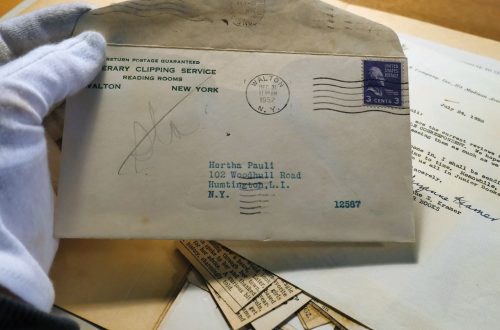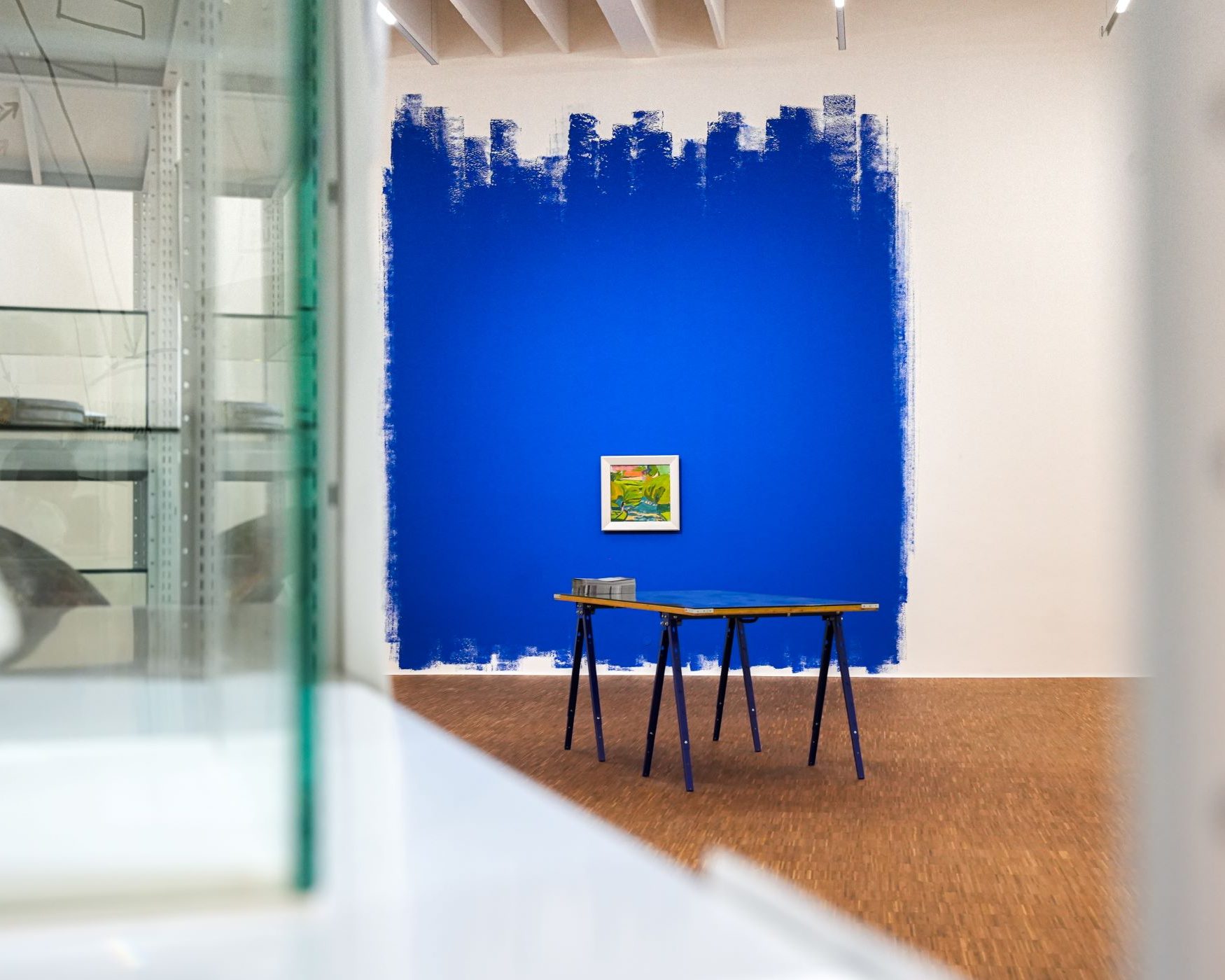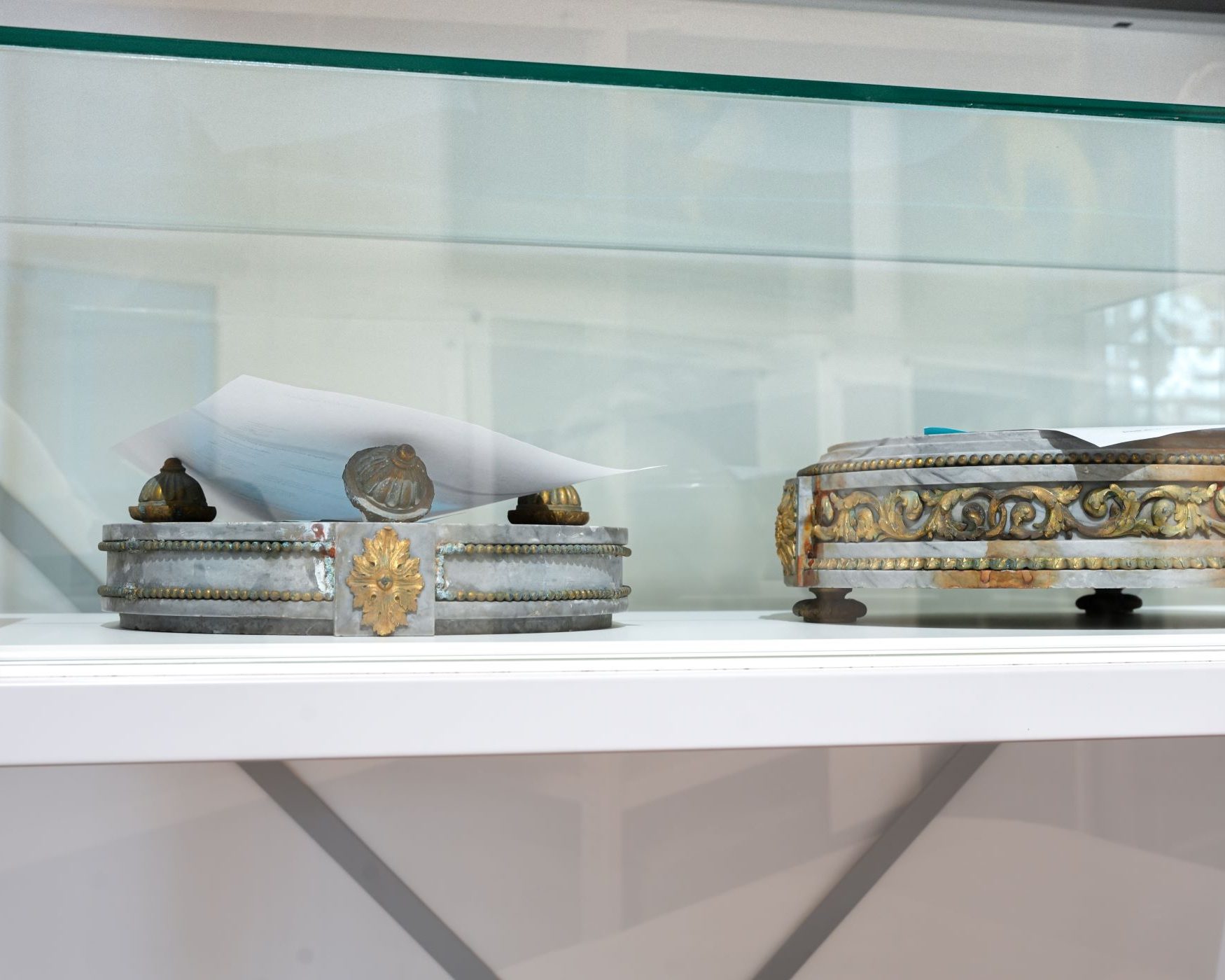Histories of (Non)Restitution at the Salzburger Kunstverein
06. November 2025
Biljana Puric
"The Museum of (Non)Restitution" at the Salzburger Kunstverein examines the complex legacies of Nazi-looted art through contemporary artworks produced for the show by Thomas Geiger, Tatiana Lecomte, and Sophie Thun, intertwining historical research with artistic reflection
Peering into a wardrobe through a small hole in its blackened doors, I catch a glimpse of my eye in the mirror before noticing, with some effort and eye movement, overlapping photos. They feature religious and household objects, artworks, portraits, and, surprisingly, a photo of Raphael’s Madonna della Seggiola (1514). I am not in an amusement park or children’s fair, but at the Salzburger Kunstverein, gazing into Sophie Thun’s artwork, on display at The Museum of (Non)Restitution exhibition.
During the period of National Socialism, the Nazis looted numerous artworks. In their attempt to construct a new ‘Aryanized’ societal order, the regime imposed strict control over cultural production, using ideology to justify looting, appropriation, and defamation of art for its own sectarian purposes. While some artworks were condemned as ‘degenerate,’ others that conformed to the prescribed aesthetic and ideological standards were seized for financial profit or earmarked for Adolf Hitler’s planned museum in Linz.
After the war, many of these artworks entered public institutions. Some have since been returned to their rightful owners, while others still sit on the shelves of museum archives. Grounded in the history of these artefacts, provenance research, and practices of remembrance, the show offers space for focused engagement and contemplation on the topic through contemporary artworks produced for the show by artists Thomas Geiger (Darkness and A Cartography of Theft), Tatiana Lecomte (God Bless the Year 1942. Helene Taussig and Her House), and Sophie Thun (Provision; Hidden Somewhere; and an intervention including paintings from the studio of Hans Makart (1840–84)).
Legacies of Looting and Restitution
Curated in collaboration with the Salzburg Museum, the presentation combines a sparse selection of artworks, storage furniture, bureaucratic documentation, wall drawings, video, and prints into an effective whole. Thomas Geiger’s video work Darkness features the artist in conversation with ‘darkness’, filmed in a salt mine in Altaussee, where an estimated 6,500 Nazi-looted artworks were stored during the war. The work, which is visually reduced to the artist’s barely discernable presence in a dark cave, translates the invisibility of looted art into a formal strategy of withholding. By staging a dialogue with ‘darkness’ itself – whose voice can be heard only by the artist – Geiger turns the act of not-hearing into a metaphor for what remains obscured. The result is an intimate yet disorienting exchange that, presented in the pitch black studio space of the Kunstverein, amplifies the sense of immersion, as if the viewers were invited to join the artist and take part in this conversation. As the narrative unfolds, many ethical, political, and philosophical questions surface, and call established notions into question. Does darkness solely conceal, or can it also reveal in equal measure? Should light always be understood in positive terms? How does our relationship to darkness shape its moral status? Through this imagined dialogue, the work probes the complex resonances of looted art, an inquiry that is also at the core of Thun’s and Lecomte’s works.
The physical difficulty of observing the images inside Sophie Thun’s Hidden Somewhere – featuring photos of missing artworks from the lootedart.com website – is suggestive of the almost impossible task of tracing their whereabouts. In contrast, her shelf installation Provision, placed just across from the wardrobe, reveals the material conditions of restitution by combining museum objects, bureaucratic paperwork, and large photographic prints. Partially covering the shelf, these prints show how the shelf looked before certain items were returned to their owners, exposing the shifting reality of archival environments.
Positioned somewhat awkwardly at the centre of the vast exhibition space, the shelf becomes a site where representation, documentation, and absence intersect. It is an object of multiple significations: a literal reference to restitution practices and a reflection on the representational aspect of images, articulated through the combination of photogram and photograph. The exposed materiality of the photographic process is characteristic of Thun’s practice. Here, it doubles down to a critical meditation on the shifting status of looted art that is simultaneously present and absent, hidden and exposed, its meaning shifting with each spatial and historical context. In making visible the mechanisms of display and erasure, Thun uses photographic materiality as a form of critical inquiry, allowing the shifting conditions of restitution to register as both aesthetic and epistemological concerns.
Tracing Unsettled Histories through Art
Elsewhere, the show traces the trajectories and networks of institutions and individuals involved in looting and expropriation, such as Geiger’s large-scale drawn map of these connections, A Cartography of Theft. Familiar names, such as the Albertina, the Museum der Moderne Salzburg, and the Chicago Institute of Art, abound in the map. They make it into an expressive graphic sign as well as a historical note indicative of the transnational circulation and complicity embedded in this history. The intricate historical piece by Tatiana Lecomte, God Bless the Year 1942. Helene Taussig and Her House, continues these explorations by narrowing the focus to one such case: the story of the Austrian painter Helene Taussig and the fate of her house, appropriated by Nazi art dealer Kajetan Mühlmann and his wife, Poldi Wojtek. A minimalist, large-scale chalk drawing of the house covers one wall in the exhibition room, while a detailed print of its history is displayed on a glass-topped table. On the adjacent wall, Taussig’s painting Landscape with Farmhouse (around 1930) appears out of place, hanging solitary on a wall that is partially painted in blue. Surprisingly large in comparison to the painting, this patch of colour distils the work into a decorative side note in a trajectory of historical omissions and selective remembrance, risking aestheticization and undermining its critical intent
In contrast, a segment of Thun’s intervention may offer the most compelling insight into the murky waters of fraught post-war restitution processes. It comprises two paintings from the Salzburg Museum hung above what seem to be their reproductions. However, on closer inspection, differences between the pairs become visible, including the absence of the artist’s signature in one of the paintings. Since the prints are based on works by 19th-century artist Hans Makart, which the Polish government is currently trying to locate, it becomes clear that the Salzburg paintings are, in fact, copies.
The story of ‘Aryanized’ art involves multiple trajectories and remains a topic that needs to be unpacked in full. Objects in the exhibition, several of which belong to the Rothschild family but still await restitution while glass-encased on Thun’s shelf, demonstrate the complexity and inherent slowness of these processes. Repurposed through contemporary interventions, these objects invite audiences to take note and engage thoughtfully in their past, present, and future conditions. Beyond didacticism or moral lessons, The Museum of (Non)Restitution encourages the questioning of what is visible and what remains hidden in equal measure. Rather than a passive reception, it proposes a dialogue on what restitution means in material, ethical, and affective terms.
On View Until November 16, 2025
The Museum of (Non)Restitution
Artists: Thomas Geiger, Tatiana Lecomte, Sophie Thun
Co-produced by Salzburg Museum Gastspiel and Salzburger Kunstverein–Picturing Justice 2025. Curated by Mirela Baciak, Katja Mittendorfer-Oppolzer, and Susanne Rolinek.


Das könnte dich ebenfalls interessieren

Verwobene Geschichte(n) schürfen
Oktober 24, 2025
Joseph Beuys – John Cage
September 25, 2024






